 Fresh mangoes, ripe avocados, and delicious bananas right from your desert backyard?
Fresh mangoes, ripe avocados, and delicious bananas right from your desert backyard?
Heck yes, man!
This week we planted four tropical trees in our front yard, and I am stoked to share with you how we did it! Because we live in Arizona, I thought it would be impossible to grow tropical trees here. We’ve got heat all right, but pretty much zero humidity.
I imagined the only way I would be able to grow tropical trees here was to create some impossible micro ecosystem of misters and fountains powered by an air conditioner. Yeah, that ain’t gonna happen.
Luckily for me, a friend recommended that I follow The Vegan Athlete. I had a blast learning all about how Arizona can be the perfect place for tropical trees. His amazing videos led me to none other than the famous Shamus O’Leary in Phoenix, who is the master at growing these kinds of trees in the desert. I had to meet this guy! Besides, who can pass up meeting an Irishman from Chicago who grows tropical trees in Arizona? That’s some life story right there.
I spent a beautiful Sunday morning learning from Shamus and soaking in all of his wisdom. You see, there are a few things you need to know before sticking a tropical tree in the ground. If you do some good prep work, and care for the tree well during the first few years, it can grow into a large, well-producing tropical tree paradise. Right in your dry, hot, desert of a back yard. Here are the four trees we planted. (Avocado trees coming in September!)
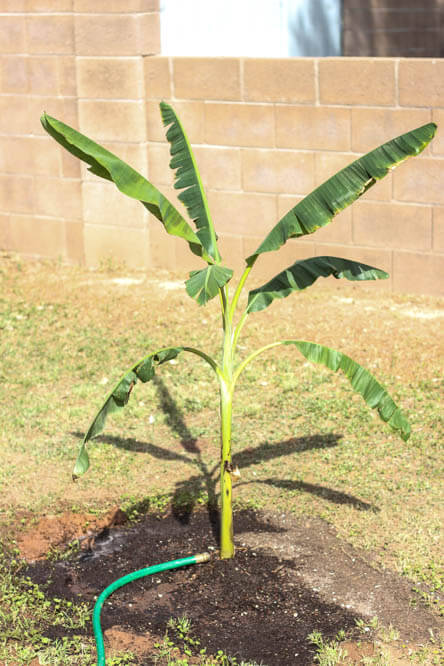
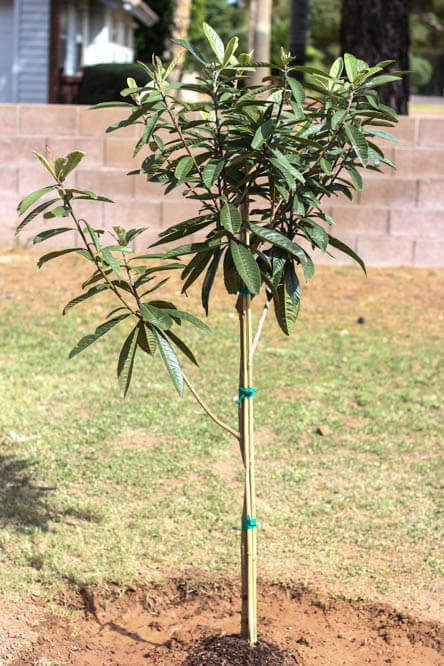
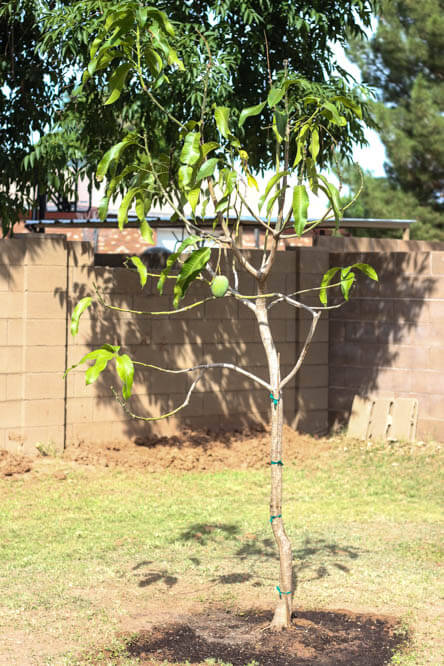
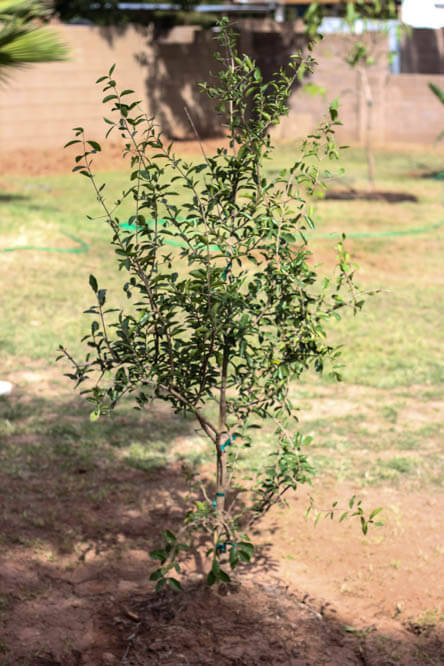
Things to know when planting a tropical tree in the desert:
- You’ll need to dig a BIG ‘OL HOLE: Most people plant a hole the size of the bucket the tree comes in, when in fact you really need to dig a hole twice that size in length, width, and depth. For example, if your tree comes in a 15 gallon bucket with a 15 inch diameter, you need to dig a hole that is 30 inches wide, 30 inches long, and 30 inches deep. (Set the dirt close to the hole; you’ll be using it soon.)
- Make your hole a square instead of a circle: A circular hole will encourage the root to climb around again and again in a spiral, but a square hole will encourage the roots to grow out to the corners and then out further. Wider roots = stronger tree, so be sure to dig a square hole.
- Be prepared with the right amendment: A tropical tree needs a safe place to grow, but they also need to acclimate to the local soil. When planting, you’ll be mixing back in the hole a 50/50 mixture of your native soil and a combo of the following: 1 part lava sand, 1 part lava rock, and 2 parts of mulch (your choice). Shamus had this mixture conveniently in bags for me to use when planting.
- Add some root-boosting ingredients: Spending a small amount of money on some extra nutrients for your tree will go a long way! We add 2 TBS. mycorrhizal fungi, about 1-2 pounds of worm castings, and then when we water for the first time, we mix about 1 cup of fish emulsion to a 5 gallon bucket of water, and pour around the tree.
- Pack, pack, pack… pack it down: Because it’s a guarantee that the ground will settle, you’ll need to be sure to pack your 50/50 soil mixture back down before you place the tree in the ground. You don’t want the feeder roots to settle too much (you’ll see why this is so important in the next step).
- Plant the tree about 3-4 inches ABOVE the ground level: Resist the urge to plant that sucker deep in the ground. You see, your tree’s root has feeder roots at the top, and you want those little guys to have access to mulch and compost. You definitely don’t want to bury those guys in your regular soil.
- Cover with a hunk of compost and mulch: Once your tree is planted, you’ll need to place on top of that composted material, then cover that with mulch. Good mulch can be straw, leaves, or wood chips. As time goes on, this will break down naturally and become more food for the tree. Your job will be to keep stacking new stuff on top of the tree. 🙂
- Create a berm around the tree: When watering, the last thing you want to happen is all of that water to run away from the tree out into the yard. Your solution is a berm. It will keep the moisture next to the tree and on that mulch you’ve been placing. It will create a perfect, moist environment for the tree. It will also reduce your watering costs, which is always a plus!
- Water with a garden hose filter:
Have you ever attempted to grow tropical trees in a desert climate? Tell me your tips!
Also, watch my latest update on my avocado tree!
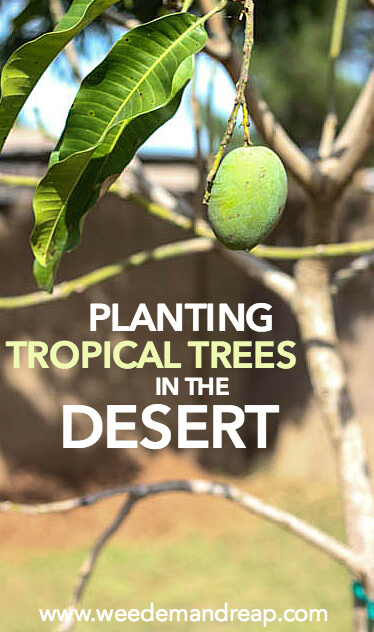
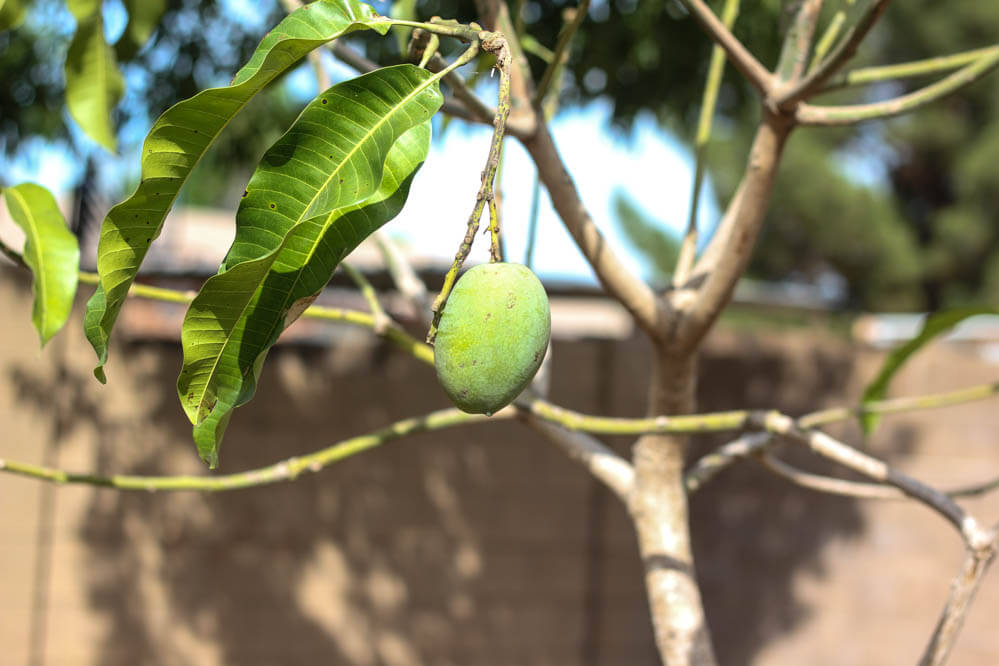 Fresh mangoes, ripe avocados, and delicious bananas right from your desert backyard?
Fresh mangoes, ripe avocados, and delicious bananas right from your desert backyard?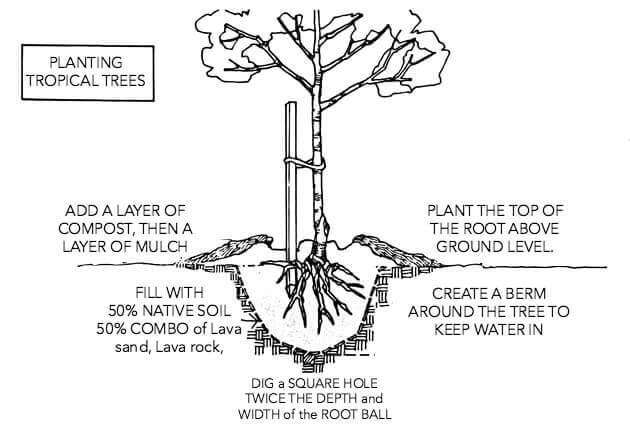
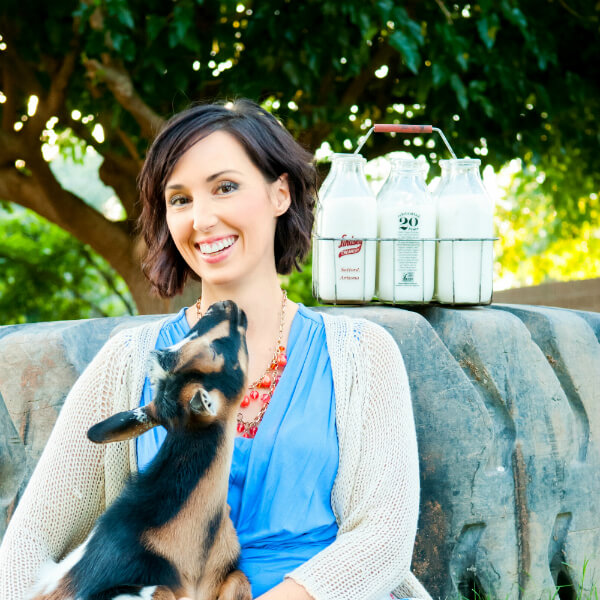
Hey, does anyone know where i can get a few of the aravaipa seeds. Im located in pahrump nv, ive gotten two avacado seeds started indoors one is almost 3 inches high in two months, sprouting leaves. But since im near death valley its HOT. NEED avacado that can take the heat.
Thanks
My wife and I have two large trees in our front yard but we don’t like how they look, so we are considering a new landscape design. I appreciate your recommendation to add mycorrhizal fungi, worm castings, and fish emulsion to boost root growth. We may consider hiring a professional tree remover and landscaper to help us with our landscaping project.
This is great information!!! How different do you think the soil is in your area of AZ compared to Las Vegas? I’m wanting to try a few of these trees and am wondering if a trip to O’Leary’s to get the Lava would benefit the native soil here or if there are other amendments I would need to use.
Hi Vivian-
I imagine the soils are pretty similar. If you really want to know what condition your soil is in and what trees would do well, contact your local county extension office and talk with their master gardeners. They can help you soil test and find suitable varieties of plants. Best of luck and Happy Gardening! -Bobbi (DaNelle’s Assistant0
Just found you. Love your blog…I have 2 papayas in my raised bed at home. Ate the fruit, saved the seed and threw them in the bed. Surprise! they are about 4 feet tall now. I have to protect from chill. I live in Mesa.
how to plant banana trees in desert
Where can you find lava sand locally in the Phoenix area?
Shamus O’ Leary Tropical Trees
Great article! How is your banana doing? We are in Gilbert & are interested in planting one. If you don’t mind my asking, what were his prices like? Thanks!
Hi Emily! He was very reasonable, especially the banana trees, they were very cheap!
we plan to move in the near future to a hot dry climate – southern Utah, so this article was of special interest to us. However, some of the recommendations for planting trees are not in line with current recommendations made by extension agents dealing with horticulture: there is no evidence to support the idea of a square versus round hole to promote root growth, staking trees (as shown in the picture) greatly weakens both trunk and root system strength, and soil amendments – by localizing nutrients for the roots, keep the root system from developing normally. just plant the thing in a hole and back fill with native soil. I encourage readers to take a look at “The Garden Professors Blog/website” for an accurate source of information on this and other plant related topics.
Those “current recommendations” you speak of are probably the #1 reason more Phoenix area gardeners have not been more successful in the past. Before dismissing DaNelle’s information as “inaccurate”, please spend some time working in our soil and climate, then share your personal experiences.
Everyone is an expert. Give a little advice on. YouTube channel and suddenly you can walk on water. Huh?!
Thank you for your tips I’d like to try an avacado tree in Nevada. But where do you get Lava rocks!?
What theme are you using? I love the look and feel 😀
Thanks Lance! I use a custom theme that was designed for me:) Sorry, wish I could help more!
Cool website! My family has been really using alot of essential oils lately, I use peppermint oil like a fiend! Anyway, we are in Phoenix, and have been getting tropical plants from the Rare Fruit Tree Growers organization here in Arizona. We have planted banana, guava, and mango. the mango didn’t make it, and the banana died way back in the winter, but now its coming back! I was wondering if that korm would still be able to come back and it did! So fascinating when you read about bananas, that they’re actually an herb and not a tree. Guava is doing excellent and has some baby fruit on it now. Less tropical but still fruit producing, our fig tree is growing like crazy and has many baby figs on it, and we just planted a peach this year and it’s doing great! Also planted blackberry cuttings a neighbor gave us, and it is growing so fast! Love your website, we have chickens and gardens, and really want goats someday. Keep on keepin’ on!
Barbara Brown, I don’t have the answer for you but I would suggest contacting someone from UT extension; I have found that my local extension here in FL has been very helpful on the best plants and the specific varieties that do best where I am. Good luck!
I was wondering if avocado’s could be planted in northeast Texas? We live thirty miles east of Dallas.
I’m not sure, what zone are you in?